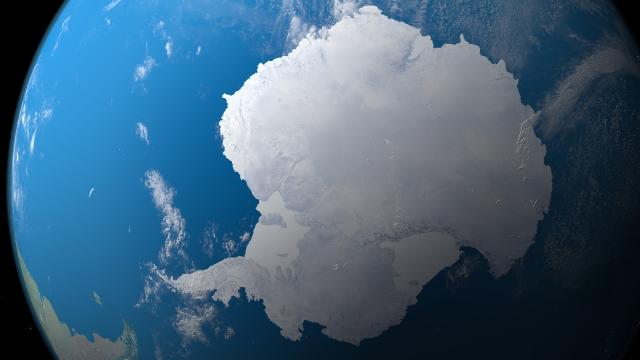Here’s something you don’t see every day: Earth has a new ocean.
The Southern Ocean has officially become Earth’s fifth internationally recognised ocean. National Geographic announced the news fittingly on World Oceans Day on June 8.
What is the Southern Ocean?
The Southern Ocean is defined as the body of water surrounding Antarctica. It joins the four other officially recognised oceans — the Atlantic, Pacific, Indian and Arctic.
While it may seem pretty significant, getting a new ocean and all, the Southern Ocean has been recognised in various circles for years.
“The Southern Ocean has long been recognised by scientists, but because there was never agreement internationally, we never officially recognised it,” National Geographic Society Geographer, Alex Tait, said.
This recognition by National Geographic means the Southern Ocean will be labelled slightly differently on official maps.
“We’ve always labelled it, but we labelled it slightly differently [than other oceans]. This change was taking the last step and saying we want to recognise it because of its ecological separation,” Tait said.
The hesitancy to label the Southern Ocean came down to whether it was unique enough.
Geographers weren’t sold on whether the ocean had its own defining characteristics or whether it was just a colder extension of the other oceans.
Marine Scientist at NOAA, Seth Skyora-Bodie, described the new ocean as mesmerising, saying: “the glaciers are bluer, the air colder, the mountains more intimidating, and the landscapes more captivating than anywhere else you can go.”
Where does it start and end?

Ocean borders are obviously a little difficult to pinpoint, so where can we expect to find the Southern Ocean?
The Southern Ocean is unique in more ways than one in that it is defined by its current rather than its surrounding continents, according to National Geographic.
The Antarctic Circumpolar Current (ACC) was created roughly 34 million years ago after Antarctica split off from South America.
It’s this current that helps to define the Southern Ocean. The ACC flows from east to west around Antarctica in a band that reaches roughly a latitude of 60 degrees south.
Water within the ACC is colder and slightly less salty and it helps to keep the water temperatures lower near Antarctica.
The ACC has huge ecological impacts on the rest of the Earth’s oceans. It helps drive a global circulation system and maintains unique marine ecosystems within its colder waters.
The Southern Ocean is also unique in that it is the only ocean to touch three others and surround a continent, rather than be surrounded by one.
Scientists are currently looking into whether climate change is having an impact on the newest ocean. Warmer temperatures in the Southern Ocean could lead to faster melting of the ice shelves, which would be not good.
Let’s all make our new ocean feel welcome by not destroying it, shall we?
